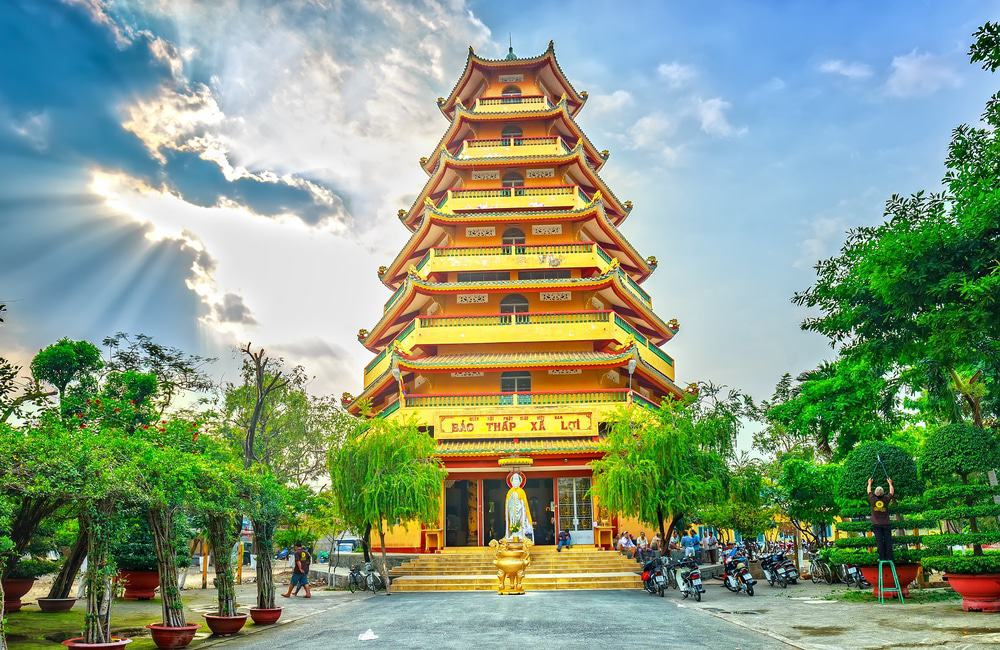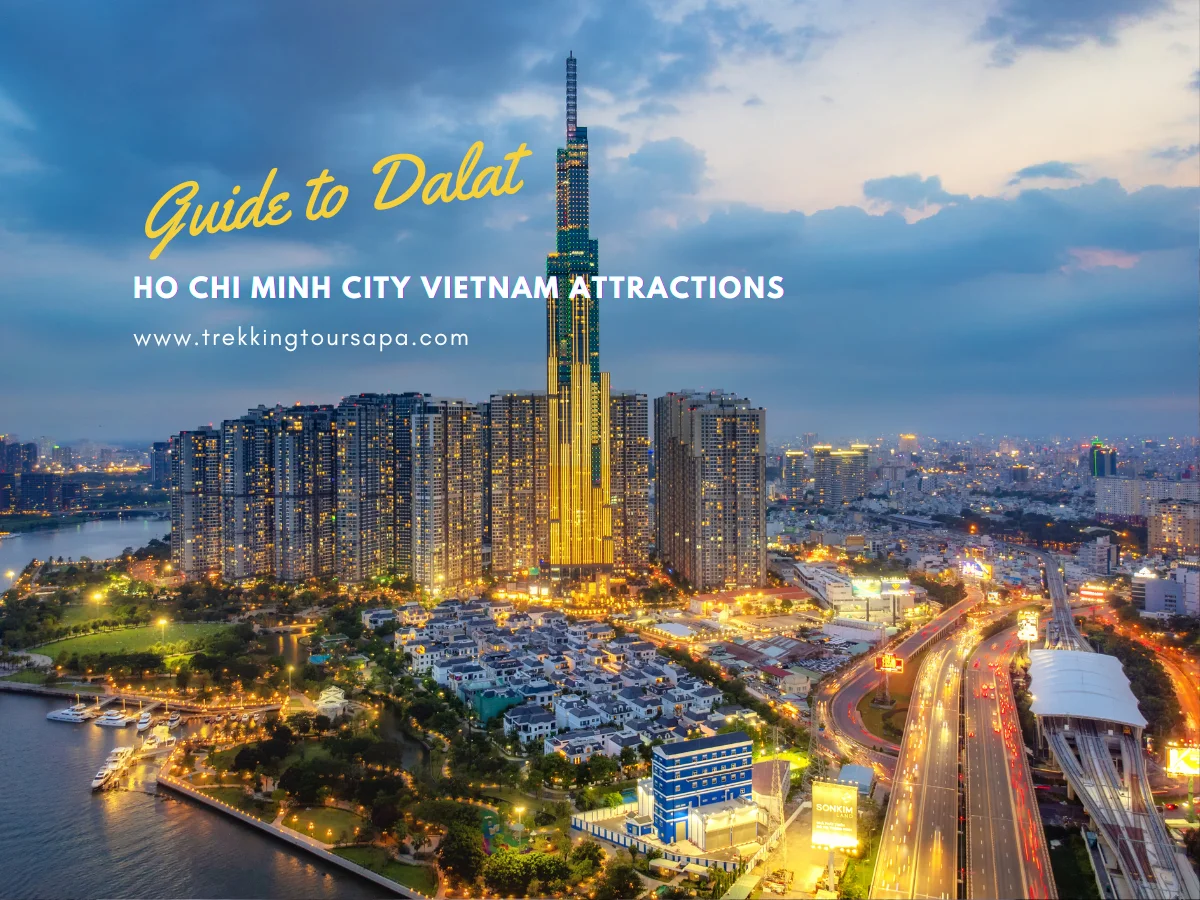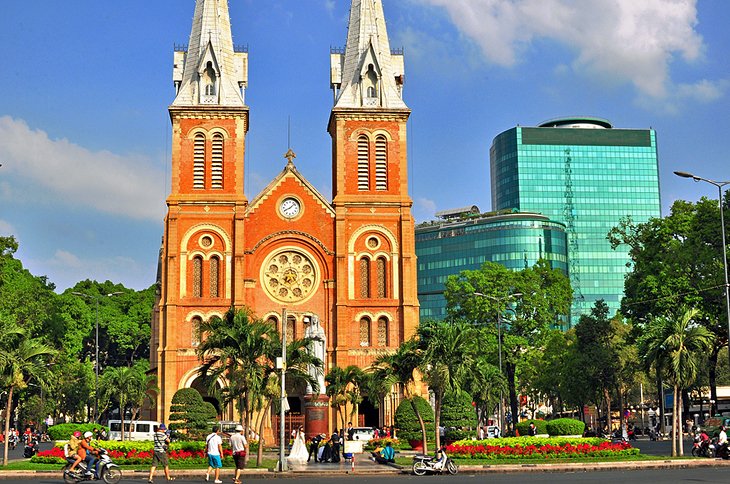
A tidal wave of motorbikes flows through streets lined with French colonial villas, sleek skyscrapers, and ancient pagodas shrouded in incense smoke. The air is thick with the scent of simmering pho, freshly brewed coffee, and the infectious energy of a city in constant motion. This is Ho Chi Minh City, a metropolis that pulses with the rhythm of commerce and the echoes of a profound history. Still lovingly called Saigon by locals and travelers alike, this southern Vietnamese powerhouse is a city of dizzying contrasts, where the past is not just remembered but lived alongside a relentlessly forward-looking present.
For the first-time visitor, Ho Chi Minh City can feel like a sensory overload. Yet, beneath its chaotic surface lies a destination of immense depth, resilience, and charm. From war-era landmarks that tell stories of survival to bustling markets and serene spiritual havens, this guide will navigate you through the essential experiences that define the soul of Saigon.
A Glimpse into a Storied Past

Related Articles about Ho Chi Minh City: A Vibrant Tapestry of History, Culture, and Flavor:
- The Land of the Long White Cloud: Your Ultimate Travel Guide to New Zealand
- Cusco: Gateway to the Sacred Valley and the Lost City of the Incas
- Beyond the Beer: A Comprehensive Guide to Experiencing the Czech Republic
- Russia: A Timeless Tapestry of History, Culture, and Adventure
- Phuket: Paradise Found – A Comprehensive Guide to Thailand’s Pearl of the Andaman
To truly appreciate Ho Chi Minh City, one must understand its layered history. The city began as a small Khmer fishing village called Prey Nokor before being settled by Vietnamese refugees in the 17th century and renamed Saigon. Its strategic location on the Saigon River delta made it a prize, and in the mid-19th century, it was colonized by the French, who transformed it into the lavish capital of Cochinchina, earning it the moniker "The Pearl of the Far East." The grand boulevards, neo-Romanesque cathedrals, and stately government buildings from this era still form the architectural backbone of the city center.
The 20th century saw Saigon become the epicenter of the tumultuous Vietnam War, serving as the capital of South Vietnam. The city’s name became synonymous with the conflict, culminating in the dramatic fall of Saigon on April 30, 1975, when North Vietnamese tanks crashed through the gates of the Presidential Palace. Following the country’s reunification, Saigon was officially renamed Ho Chi Minh City in honor of the revolutionary leader. Today, this history is not hidden away in textbooks; it is etched into the city’s streets, waiting to be discovered.
Top Attractions: Where History and Modernity Collide
Ho Chi Minh City’s attractions offer a compelling journey through its complex narrative.
1. The War Remnants Museum
A visit here is essential for understanding the Vietnam War from a Vietnamese perspective. It is a sobering, powerful, and often harrowing experience. The museum’s exhibits are unflinchingly direct, displaying captured American military hardware, graphic photographs of the war’s atrocities, and detailed accounts of the devastating effects of chemical warfare, particularly Agent Orange. The "tiger cages," which were used to hold political prisoners, are a particularly chilling display. While emotionally challenging, the museum is a vital testament to the horrors of war and the nation’s incredible resilience.
2. Cu Chi Tunnels
Located about a 90-minute drive from the city center, the Cu Chi Tunnels are an extraordinary testament to the ingenuity and tenacity of the Viet Cong. This immense network of underground tunnels stretched over 250 kilometers, housing living quarters, command centers, hospitals, and weapons factories during the war. A visit includes a guided tour where you learn about the creation of the tunnels, the clever booby traps used against enemy soldiers, and the harsh realities of life underground. The highlight for many is the opportunity to crawl through a short, widened section of the tunnels, offering a visceral sense of the claustrophobic conditions soldiers endured.
3. Reunification Palace (Independence Palace)

This is the very spot where the Vietnam War officially ended. The image of a North Vietnamese tank bursting through its gates on April 30, 1975, is one of the 20th century’s most iconic photographs. The palace itself is a time capsule of 1960s architecture and design. Preserved exactly as it was left, you can wander through the president’s private quarters, opulent state rooms, and the eerie basement command bunker, complete with old maps and communications equipment. It’s a fascinating glimpse into the seat of power of the former South Vietnamese government.
4. Notre Dame Cathedral & Saigon Central Post Office
Sitting side-by-side in the heart of District 1, these two buildings are magnificent relics of the French colonial era. The Notre Dame Cathedral, built entirely with materials imported from France, stands as a solemn, neo-Romanesque landmark. Just across the street is the Saigon Central Post Office, a masterpiece of colonial architecture often attributed to Gustave Eiffel. Step inside to admire its grand, vaulted ceiling, intricate tile floors, and a large, painted map of old Saigon. It remains a functioning post office, adding a layer of living history to its architectural splendor.
5. Ben Thanh Market
For a full-throttle immersion into local life, there is no place like Ben Thanh Market. This bustling, cacophonous hub is the city’s most famous market. By day, its labyrinthine alleys are packed with vendors selling everything from Vietnamese coffee and conical hats to vibrant textiles, handicrafts, and knock-off designer goods. It’s also a fantastic place to sample local cuisine at the food stalls. As dusk falls, the indoor market closes, and the surrounding streets transform into a vibrant night market, offering delicious street food and more opportunities for souvenir hunting.
6. Jade Emperor Pagoda (Phuoc Hai Tu)
Escape the city’s frenzy at this atmospheric Taoist pagoda. Built in 1909, the Jade Emperor Pagoda is a spiritual oasis filled with the sweet, heavy scent of burning incense. Its dimly lit halls are filled with elaborate, and sometimes intimidating, statues of deities and heroes from Taoist lore. The intricate woodcarvings and eerie depictions of the ten levels of Hell are particularly noteworthy. It’s a place of active worship, allowing visitors a respectful glimpse into the spiritual life of the city. Former U.S. President Barack Obama’s visit in 2016 brought it international fame.
7. Bitexco Financial Tower & Saigon Skydeck
Symbolizing the modern, aspirational face of Ho Chi Minh City, the 68-story Bitexco Financial Tower dominates the skyline. Inspired by the shape of a lotus bud, Vietnam’s national flower, its design is striking. Head up to the Saigon Skydeck on the 49th floor for breathtaking 360-degree panoramic views of the sprawling city and the winding Saigon River. It’s the perfect spot to appreciate the sheer scale of the metropolis and see the old and new cityscapes merge.
Navigating the Urban Jungle: Transportation
Getting around Ho Chi Minh City is an adventure in itself.
- Ride-Hailing Apps: The most convenient and reliable way to travel is by using apps like Grab or Gojek. You can book a car or, for a true local experience, a motorbike taxi (GrabBike/GoBike). Fares are fixed upfront, eliminating the need to haggle and ensuring a fair price.
- Taxis: Reputable taxi companies like Vinasun and Mai Linh are metered and generally trustworthy. Always ensure the meter is running.
- Cyclos: These three-wheeled bicycle taxis are more of a tourist experience than a practical mode of transport. They are best for short, leisurely rides around landmarks in District 1. Always agree on the price and duration firmly before you start.
- Walking: The city center (District 1) is surprisingly walkable. Exploring on foot allows you to discover hidden alleys, charming cafes, and street art. However, be prepared for the heat and humidity, and always be cautious when crossing the seemingly chaotic streets.
Finding Your Saigon Sanctuary: Accommodation
Ho Chi Minh City offers a vast range of accommodation to suit every budget and style.
- Luxury: District 1 is home to world-class luxury hotels, many offering stunning river views and rooftop pools. The Reverie Saigon, Park Hyatt Saigon, and The InterContinental Saigon are top-tier choices for opulent stays.
- Mid-Range: Boutique hotels and stylish serviced apartments are plentiful, especially in District 1 and the slightly quieter, more local-feeling District 3. These offer excellent value with modern amenities and a touch of Vietnamese charm.
- Budget: The backpacker hub is centered around Pham Ngu Lao and Bui Vien streets in District 1. Here you’ll find an abundance of affordable hostels, guesthouses, and budget hotels, along with a lively nightlife scene.
When to Go: The Rhythms of the Seasons
Ho Chi Minh City has a tropical climate with two distinct seasons.
- Dry Season (December to April): This is generally considered the best time to visit. The weather is warm and sunny with lower humidity, making it ideal for exploring the city on foot.
- Wet Season (May to November): This season is characterized by higher humidity and daily afternoon downpours. The rain is usually short and intense, and it rarely disrupts travel plans significantly. Plus, the city is often greener and less crowded during this time.
Essential Travel Tips for a Seamless Trip
- Visa: Check visa requirements for your nationality well in advance. Many countries require a visa, which can often be obtained online as an e-visa.
- Currency: The local currency is the Vietnamese Dong (VND). The denominations are large, so take a moment to familiarize yourself with the notes. ATMs are widespread, and credit cards are accepted in larger hotels and restaurants.
- Stay Connected: Purchase a local SIM card at the airport upon arrival. Having data is invaluable for using maps and ride-hailing apps.
- Embrace the Street Food: Saigon is a street food paradise. Don’t be afraid to try classics like pho (noodle soup), banh mi (Vietnamese sandwich), and com tam (broken rice). A good rule of thumb is to eat at busy stalls with a high turnover of local customers.
- Bargain with a Smile: Bargaining is expected at markets. Approach it as a friendly game, always keep a smile on your face, and be prepared to walk away if the price isn’t right.
- Coffee Culture: Vietnam is the world’s second-largest coffee producer, and its coffee culture is legendary. Be sure to try a ca phe sua da (strong iced coffee with sweetened condensed milk) at a local sidewalk cafe.
Conclusion: The Enduring Soul of Saigon
Ho Chi Minh City is more than just a collection of landmarks; it is a living, breathing entity. It’s a city that wears its history on its sleeve while sprinting toward the future. It’s the taste of a perfect banh mi from a street cart, the roar of a thousand motorbikes, the quiet contemplation inside a smoky pagoda, and the warm, resilient spirit of its people. It is a city that demands your full attention and rewards you with an experience that is as unforgettable as it is uniquely, intoxicatingly Vietnamese. Come to discover its history, but stay for the energy that will capture your heart.





